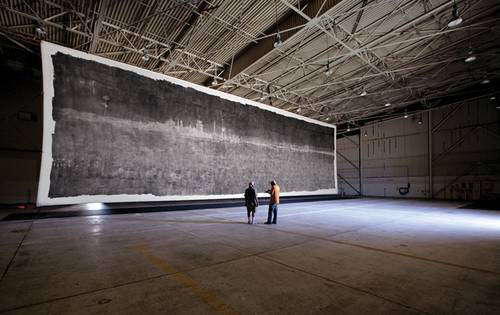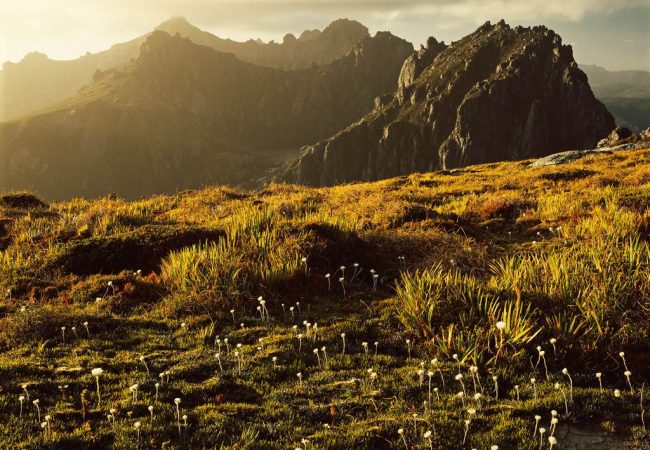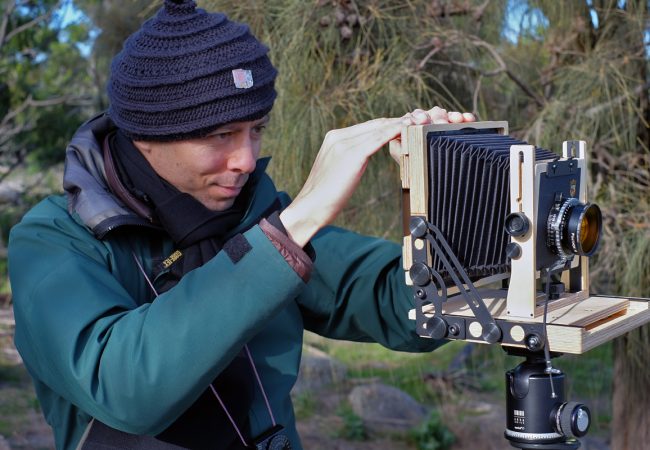Review, and a personal reflection by Lloyd Shield…
Book Review: The Great Picture – Making the World’s Largest Photograph
This book tells the story of the biggest photograph ever made, on what was the ultimate large format camera, a converted aeroplane hanger. The text by Dawn Hassett not only explains how and why this project happened but also gives a very readable history of photographic image making that helps to put this project in context. She also gives account to the tensions and drama that almost ended the project before the photograph could be made. The photograph was made as part of a larger project that documented the transformation of a closed military air base into a public park in California, USA.
The size of the project is staggering. The finished photograph, a negative on linen measured 32.74 meters long by 9.58 meters high. It took 400 volunteers and 2,270 litres of developer and 4,540 litres of fixer. The tray to process the photograph was made from 2,230 square meters of plastic. The blacking out of the massive hanger took 4,920 litres of gap filler and 2.45 kilometres of gaffer tape. The scale of the book is impressive too. Complete with slipcase with dye cut pinhole it measures 38 x 25 cm. It is well illustrated with photographs, including two double page foldouts of the negative and positive images (the positive image was done digitally), and some scary but interesting images of the volunteers standing in the massive developing tray with mops.
Only one photograph was made on the gigantic pinhole camera, and due to the scale of the finished photograph, it has only been exhibited several times. I found the book very interesting and well produced, I’d recommend it to anyone interested in alternative process photography, and those interested in big things.
A footnote however, the history of this air base and its role in the American War in Vietnam that resulted in more than two million Vietnamese deaths should not be forgotten.
The Great Picture: Making the World’s Largest Photograph
Text by Dawn Hassett
Hudson Hill Press, 2012.
AUD $110.00
Previous Post: Book Review: Ancient Trees: Portrait of Time




